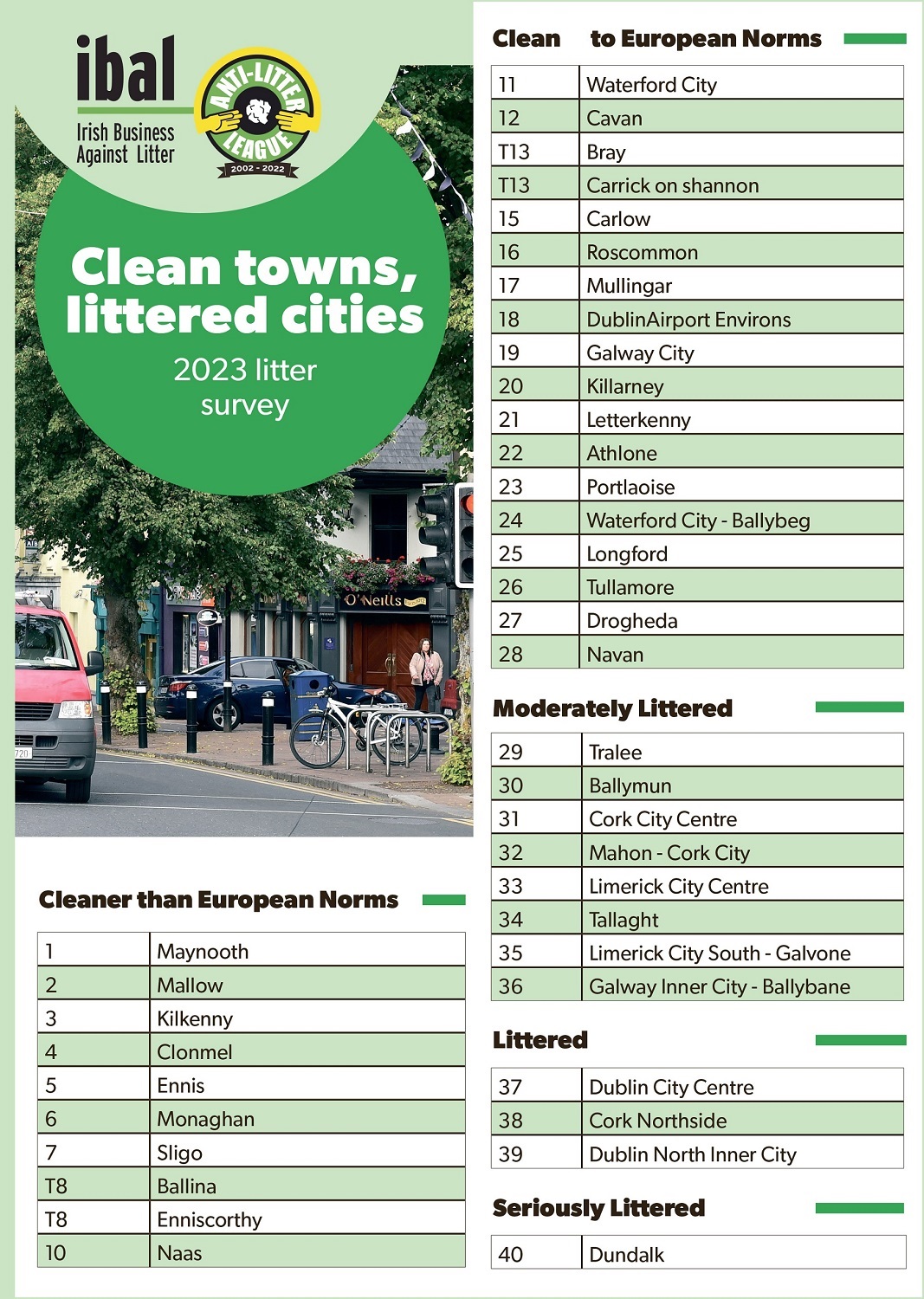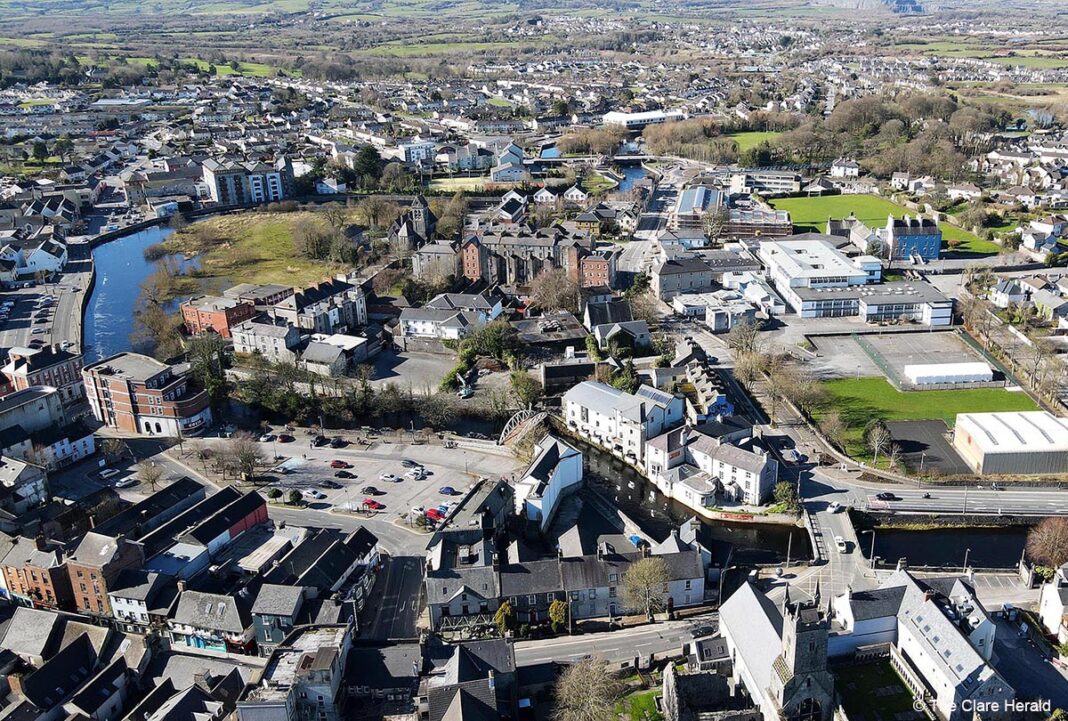The latest nationwide survey by business group Irish Business Against Litter shows Ennis retaining its position among the 5 cleanest towns in the country.
According to the survey of 40 towns and cities, the great majority of Ireland’s towns are clean, but two-thirds of city areas still littered. The survey presents a snapshot of cleanliness levels across Ireland as the peak summer tourist season commences.
An Taisce, which carries out the surveys for IBAL, said: “Remarkable consistency from Ennis, with another top 5 position in the IBAL rankings and again free of heavily littered sites. Eight out of the ten sites surveyed were top ranking, among them O’Connell Street (an exceptionally clean main shopping street), Lidl (Gort Road), Clare County Museum and Tim Smythe Park – the latter is an extensive survey area and despite plenty of activity on a very sunny afternoon, it was very much deserving of the top litter grade.”
Over 90% of towns surveyed were deemed clean, compared with just 28% of city areas. Maynooth won out ahead of Mallow, Kilkenny, Clonmel and Ennis. Dundalk, ‘seriously littered’ at the very foot of the table, and ‘moderately littered’ Tralee, were the sole towns to miss out on clean status.
Waterford and Galway were once again our only clean cities. Cork City Centre, Mahon, Limerick City and Galvone have all made some progress, as has Ballymun. Dublin City Centre, however, has deteriorated from ‘moderately littered’ to ‘littered’.
“Clearly, tourism is a focus of this annual summer survey and unfortunately the major urban gateways to our towns and countryside – notably Dublin – are falling short of the mark, and creating an underwhelming first impression for visitors,“ according to Conor Horgan of IBAL. “As a high-cost destination, tourists to Ireland can expect better. It’s a fact, too, that the great work being done in our towns is negated by litter in our cities.”
The survey showed that PPE litter has not disappeared entirely, with masks found in 7% of sites. There was a slight drop in the prevalence of alcohol cans and bottles, but coffee cups were present in 20% of sites, which, IBAL maintains, backs up the need for a coffee cup levy. There was an increase in cigarette butt litter.
Vaping devices were included as a litter type for the first time and were evident in 6% of sites. “The impact of disposable vapes is twofold,” say Conor Horgan.” Not only are they single-use plastic, but the lithium battery within them is an especially toxic form of litter. Unfortunately, as is our experience with coffee cups, consumers tend to opt for the convenience of the disposable product. In striving for a circular economy, the case for banning them is a strong one.”

